Back to Basics: Understanding the Three Types of Clay in Pottery
Pottery is an art form that has captivated people for centuries, and at the heart of this craft lies the essential material: clay. Understanding the different types of clay is crucial for anyone looking to dive into pottery, whether you're a curious beginner or a seasoned artisan. In this article, we will explore the three primary types of clay used in pottery: earthenware, stoneware, and porcelain. Each type has its unique properties, firing temperatures, and applications, which can significantly influence your pottery-making process. So, let’s roll up our sleeves and get our hands dirty as we delve into the fascinating world of clay!
Earthenware clay is often the first type of clay that many potters encounter. Known for its porous nature and rich, vibrant colors, earthenware is a favorite among hobbyists and professionals alike. This clay typically fires at lower temperatures, ranging from 1,830°F to 2,100°F (1,000°C to 1,150°C), which makes it more accessible for beginners. The porous quality of earthenware means that it is not as strong as other clays, but it can be beautifully glazed to achieve a stunning finish. Common applications of earthenware include decorative pots, tiles, and dinnerware, making it a versatile choice for various projects.
Moving on to stoneware clay, this type is celebrated for its durability and versatility. Stoneware is fired at a higher temperature, typically between 2,190°F and 2,400°F (1,200°C to 1,300°C), which results in a denser, more robust final product. Its non-porous nature makes it ideal for functional pottery, such as dishes, mugs, and cookware. Stoneware can be left unglazed for a rustic look or glazed for a smoother finish. The clay's ability to withstand thermal shock makes it a popular choice for items used in the kitchen. So, if you're looking to create functional pieces that stand the test of time, stoneware might just be your perfect match!
Last but certainly not least is porcelain clay, often regarded as the gold standard in pottery. Known for its fine texture and remarkable translucence, porcelain is a favorite among artists looking to create high-end pottery. It fires at even higher temperatures, typically between 2,300°F and 2,600°F (1,260°C to 1,430°C), which can pose challenges for beginners. The delicate nature of porcelain requires a skilled hand and a keen eye for detail. However, the results can be breathtaking, with its ability to achieve intricate designs and a glass-like finish. Porcelain is often used for fine china, decorative pieces, and art pottery, making it a prized material in the pottery community.
Understanding the firing temperatures for each clay type is crucial in pottery. The firing process not only hardens the clay but also affects its final appearance and functionality. Here's a quick overview of the firing temperatures for each type:
| Clay Type | Firing Temperature Range |
|---|---|
| Earthenware | 1,830°F - 2,100°F (1,000°C - 1,150°C) |
| Stoneware | 2,190°F - 2,400°F (1,200°C - 1,300°C) |
| Porcelain | 2,300°F - 2,600°F (1,260°C - 1,430°C) |
When it comes to glazing, each type of clay requires distinct techniques to achieve the desired aesthetic. For earthenware, vibrant glazes can enhance its natural colors, while stoneware often benefits from earthy tones that complement its rugged texture. Porcelain, on the other hand, can showcase delicate, translucent glazes that accentuate its refined beauty. The choice of glaze not only influences the visual appeal but also the functionality of the final piece, making it essential to consider the type of clay when selecting glazing methods.
Selecting the appropriate clay is essential for achieving your desired results. Consider the following factors when choosing clay:
- Project Goals: Are you creating functional pieces or decorative art?
- Firing Temperature: Do you have access to a kiln that can reach the necessary temperatures?
- Skill Level: Are you a beginner or an experienced potter?
By assessing these factors, you can make an informed decision about which clay type is best suited for your project.
Having the right tools is vital for successful pottery making. Essential tools include a pottery wheel, various shaping tools, and a kiln for firing your creations. Each clay type may require specific tools for optimal results, so be sure to equip yourself accordingly.
Beginners often make mistakes when working with different clay types. Some common pitfalls include:
- Not understanding the firing temperature required for the chosen clay.
- Using the wrong glazing technique, leading to poor adhesion or undesired finishes.
- Overworking the clay, which can weaken the structure of the piece.
By being aware of these common mistakes, you can ensure a smoother pottery-making experience.
For those looking to deepen their understanding of clay types and pottery techniques, consider exploring the following resources:
- Books on pottery techniques and clay types.
- Online courses that offer hands-on learning experiences.
- Local workshops and pottery classes for practical guidance.
These resources can significantly enhance your skills and knowledge in pottery.
Q: What type of clay is best for beginners?
A: Earthenware is often recommended for beginners due to its lower firing temperature and ease of use.
Q: Can I mix different types of clay?
A: While it's possible, mixing clays can lead to issues during firing, so it's generally best to stick with one type per project.
Q: How do I know which glaze to use?
A: The type of clay you choose will influence your glazing options, so research the best glazes for your specific clay type.
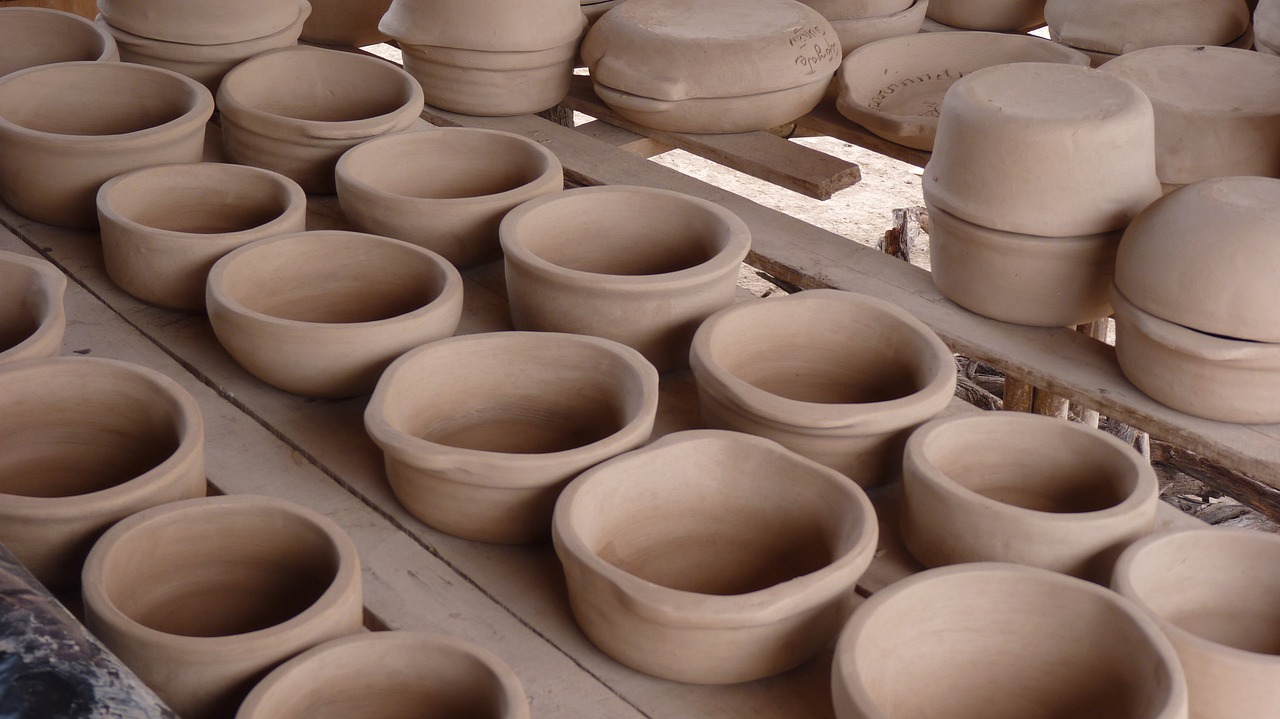
1. Earthenware Clay
When it comes to pottery, earthenware clay is often the first type that comes to mind. Known for its porous nature and vibrant colors, earthenware has been a favorite among potters for centuries. This type of clay is typically fired at lower temperatures, usually between 1,830°F and 2,200°F (1,000°C to 1,200°C), which contributes to its unique characteristics.
One of the most fascinating aspects of earthenware clay is its ability to absorb moisture. This property makes it ideal for creating decorative pieces, plant pots, and even tableware. However, because of its porosity, earthenware is not the best choice for items that will hold liquids without glazing. When glazed, though, it can transform into a stunning, functional piece that retains its charm.
In terms of color, earthenware clay is a true showstopper. It can come in shades ranging from deep reds and browns to earthy yellows and greens. The natural hues of the clay can be enhanced through various glazing techniques, allowing artists to create pieces that are not only functional but also visually striking. For instance, a simple terracotta pot can be elevated with a glossy glaze, turning it into a centerpiece for any home.
When working with earthenware, potters often find that it is easy to shape and mold, making it a fantastic choice for beginners. Its pliability allows for a wide range of techniques, including hand-building and wheel-throwing. However, it's important to note that earthenware is less durable than stoneware or porcelain, which means that while it's perfect for artistic projects, it may not withstand heavy use.
| Property | Details |
|---|---|
| Firing Temperature | 1,830°F - 2,200°F (1,000°C - 1,200°C) |
| Porosity | Highly porous, absorbs moisture |
| Color Range | Reds, browns, yellows, greens |
| Durability | Less durable than stoneware and porcelain |
In summary, earthenware clay is a versatile and vibrant option for potters of all skill levels. Its unique properties not only make it an excellent choice for artistic expression but also provide a wonderful opportunity for those just starting in the world of pottery. Whether you’re crafting a simple bowl or an intricate sculpture, earthenware clay offers the flexibility and beauty that can truly enhance your pottery-making experience.
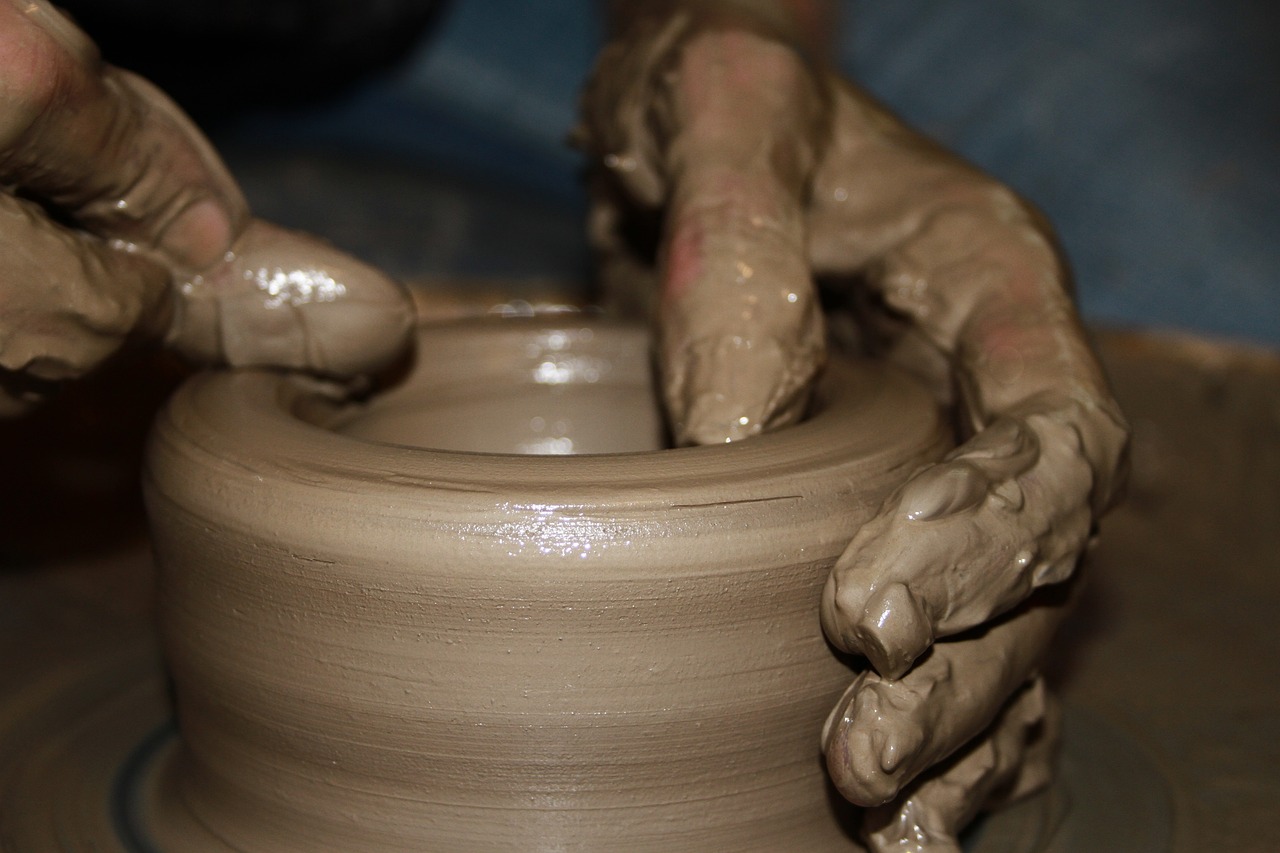
2. Stoneware Clay
When it comes to pottery, stoneware clay stands out as a favorite among artisans and hobbyists alike. Why, you ask? Well, it's all about its remarkable durability and versatility. Stoneware is a type of clay that is fired at high temperatures, typically between 2200°F and 2400°F (about 1200°C to 1300°C). This process not only strengthens the clay but also makes it less porous, resulting in a material that is both robust and functional.
One of the key characteristics of stoneware clay is its ability to withstand thermal shock, which means it can handle sudden changes in temperature without cracking. This feature makes it ideal for creating items that will be used in the kitchen, such as casseroles, baking dishes, and mugs. Imagine pulling a steaming hot casserole out of the oven and placing it directly on the table without worrying about it shattering—that’s the magic of stoneware!
Stoneware clay comes in a variety of colors, ranging from earthy browns to deep grays. This natural palette can enhance the aesthetic of your pottery, giving it a rustic and authentic feel. Additionally, because of its dense and non-porous nature, stoneware is often glazed to create a smooth, shiny finish that not only looks beautiful but also makes the pottery easier to clean. The glazing process is crucial, as it can also add another layer of durability to the finished piece.
When working with stoneware, it’s essential to understand the ideal firing conditions. The clay typically requires a reduction atmosphere during firing, which can enhance its color and surface texture. This means that the kiln needs to be carefully monitored to ensure the right balance of oxygen and fuel. If you’re new to pottery, don’t let this intimidate you! With practice and the right guidance, you can master the art of firing stoneware.
In terms of applications, stoneware is incredibly versatile. It is often used to create:
- Functional pottery: Like plates, bowls, and cups that are safe for everyday use.
- Artistic pieces: Such as sculptures and decorative items that showcase the beauty of the clay.
- Garden pottery: Including planters and outdoor decor that can withstand the elements.
In summary, stoneware clay is a fantastic choice for potters of all skill levels. Its strength, versatility, and beautiful finish make it a go-to material for creating both functional and artistic pieces. Whether you’re crafting a simple mug or an elaborate serving dish, stoneware clay can help you achieve stunning results that are sure to impress!
1. What is the difference between stoneware and earthenware?
Stoneware is fired at higher temperatures than earthenware, making it denser and less porous. This gives stoneware its durability and makes it suitable for functional items.
2. Can stoneware clay be used for outdoor pottery?
Yes! Stoneware is quite resilient and can be used for outdoor items like planters, as it withstands various weather conditions.
3. Is stoneware safe for food use?
Absolutely! Stoneware is safe for food use, especially when properly glazed. Just make sure to check that the glaze used is food-safe.
4. How do I care for my stoneware pottery?
To care for your stoneware, avoid sudden temperature changes, wash it by hand if possible, and avoid using abrasive cleaners to maintain its finish.
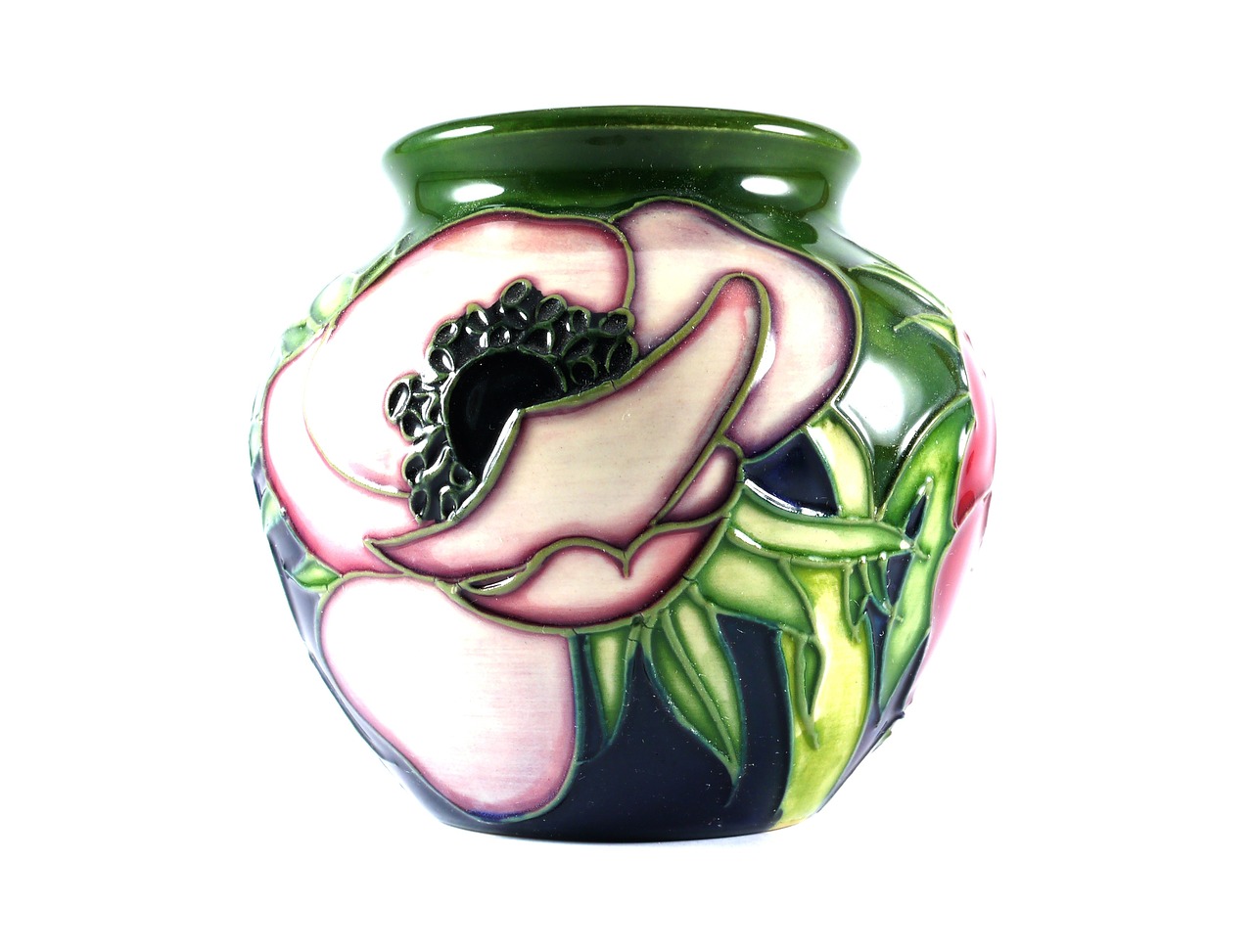
3. Porcelain Clay
Porcelain clay is often regarded as the jewel of the pottery world, and for good reason! Its fine texture, translucence, and ability to hold intricate details make it a favorite among artisans and collectors alike. Unlike its coarser counterparts, porcelain is made from a specific combination of kaolin, feldspar, and quartz, which gives it that coveted smooth finish and a unique ability to reflect light beautifully. When you hold a piece of porcelain pottery up to the light, you might be surprised by the delicate glow that shines through!
One of the most interesting aspects of porcelain is its high firing temperature. To achieve that stunning finish, porcelain must be fired at temperatures ranging from 1200°C to 1400°C (2192°F to 2552°F). This process not only hardens the clay but also vitrifies it, making it non-porous and durable. However, this high-temperature requirement can pose challenges, especially for beginners who are just starting their pottery journey. It's essential to have access to a kiln that can reach these temperatures, as attempting to fire porcelain at lower temperatures can lead to disastrous results, such as cracking or warping.
Working with porcelain clay can be both a joy and a challenge. Its plasticity allows for detailed shaping and fine craftsmanship, but its tendency to dry quickly can catch many potters off guard. Therefore, it's crucial to work efficiently and keep your clay wrapped or covered to prevent it from drying out too fast. Many potters recommend using a spray bottle to keep the surface moist while working, which can be a lifesaver when crafting intricate designs.
In terms of applications, porcelain is often used for creating high-end dinnerware, decorative objects, and even artistic sculptures. Its ability to be glazed in a variety of colors while maintaining that beautiful translucence allows for endless creativity. Some potters even experiment with layering different glazes to create stunning visual effects. However, it's important to note that the glazing process for porcelain can be quite different from that of earthenware or stoneware. The glaze must be compatible with the high firing temperatures and the smooth surface of the porcelain, which can be a bit of a learning curve.
In summary, porcelain clay is a remarkable material that offers both beauty and complexity. Whether you are an experienced potter or a curious beginner, understanding the nuances of working with porcelain can elevate your pottery-making skills to new heights. Remember, patience and practice are key when handling this exquisite clay!
- What is the main difference between porcelain and other types of clay?
Porcelain is finer and more translucent than earthenware and stoneware, requiring higher firing temperatures to achieve its unique properties. - Can I use regular glazes on porcelain?
Not all glazes are suitable for porcelain; it's essential to choose glazes that can withstand the high firing temperatures and complement the smooth surface of porcelain. - Is porcelain more challenging to work with than other clays?
Yes, porcelain can be more challenging due to its quick drying time and specific firing requirements, but with practice, it can yield stunning results.
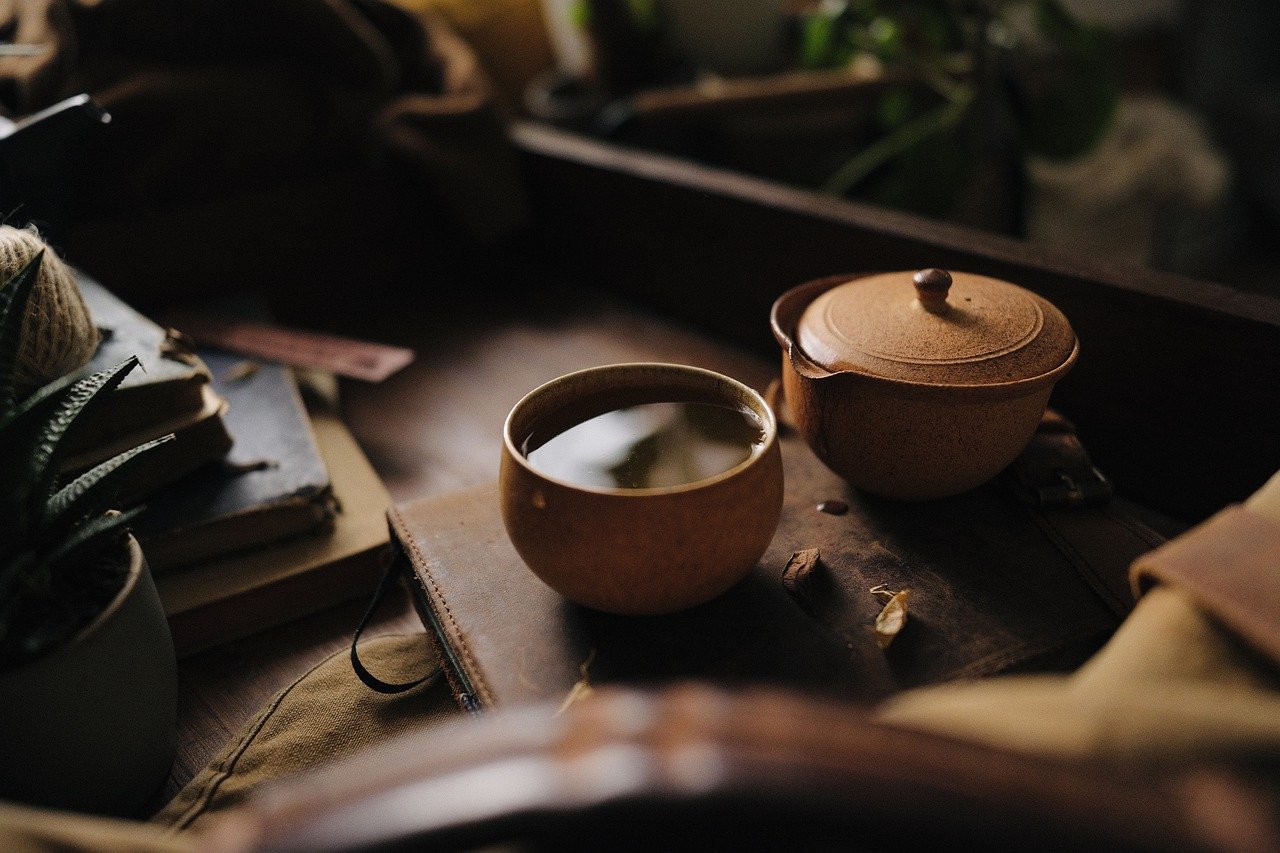
4. Differences in Firing Temperatures
When it comes to pottery, firing temperatures are crucial. They determine not only the final appearance of your piece but also its durability and functionality. Each type of clay has its own unique firing range, and understanding these differences can make or break your pottery project.
Let's dive into the specifics:
| Type of Clay | Firing Temperature Range (°F) | Characteristics |
|---|---|---|
| Earthenware | 1,830 - 2,100 | Porous, vibrant colors, low durability |
| Stoneware | 2,190 - 2,400 | Durable, versatile, often non-porous |
| Porcelain | 2,300 - 2,600 | Fine texture, translucent, very strong |
As you can see from the table above, earthenware is fired at the lowest temperatures. This makes it easier to work with, especially for beginners, but it also means that the finished pieces are more fragile and prone to chipping. The vibrant colors of earthenware are a significant draw, allowing for creative expression, but keep in mind that these pieces often require careful handling.
On the other hand, stoneware clay is the middle ground. It’s fired at a higher temperature, resulting in a more durable product. This makes it ideal for functional pottery, like dishes and mugs. Stoneware often has a rustic appearance and can be glazed in a variety of ways, enhancing its aesthetic appeal.
Now, let’s talk about porcelain. This clay type requires the highest firing temperatures, which is necessary to achieve its characteristic translucence and strength. However, working with porcelain can be challenging due to its sensitivity to temperature changes. It’s often used for high-end pottery, such as fine china, and requires a level of skill that may not be suited for beginners.
In summary, understanding the firing temperatures for each type of clay is essential for any potter. Not only does it influence the final product, but it also affects how you approach your pottery-making process. So, whether you’re crafting a delicate porcelain vase or a sturdy stoneware bowl, keep these temperature ranges in mind!
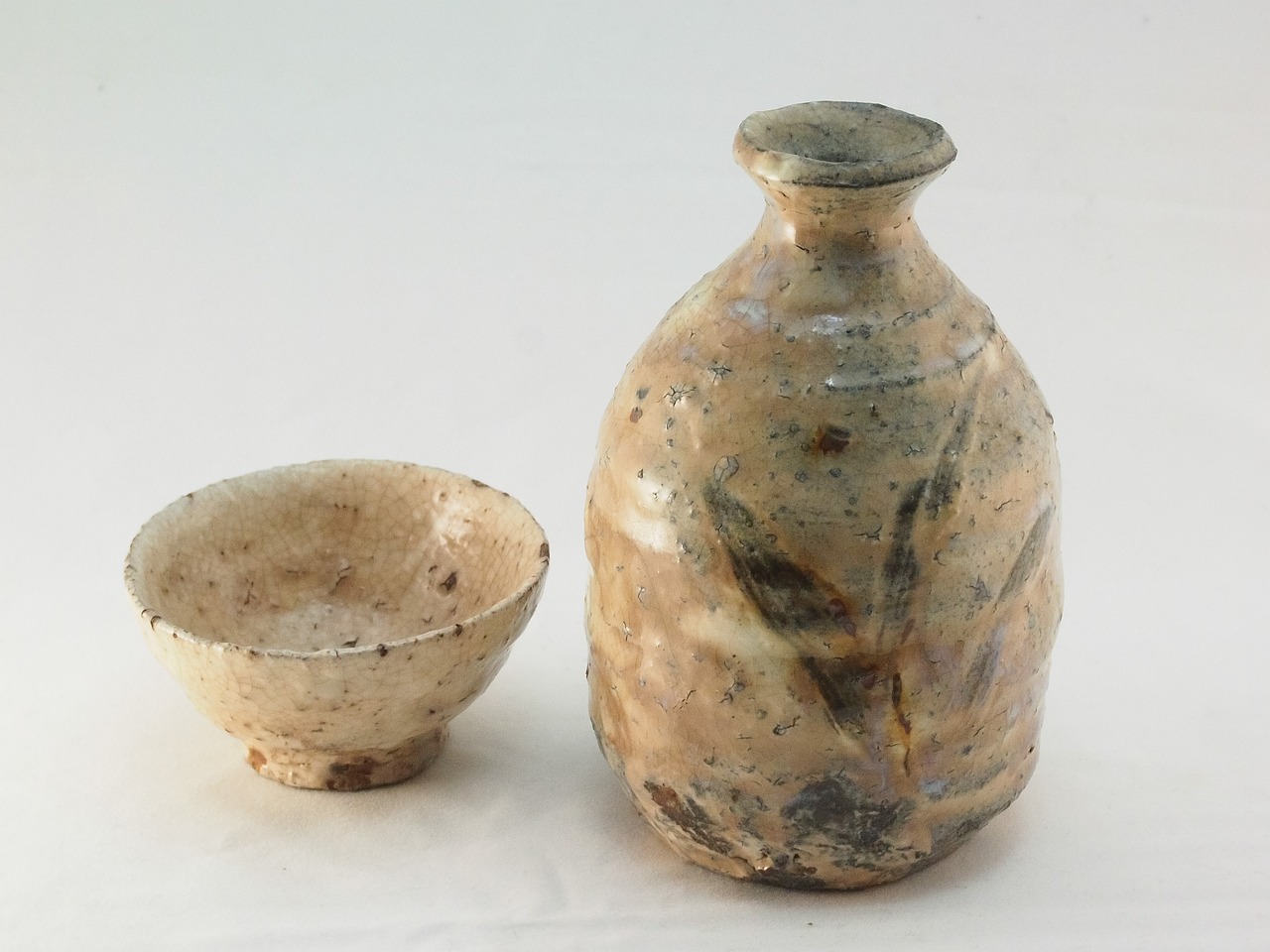
5. Glazing Techniques for Each Clay Type
Glazing is one of the most exciting aspects of pottery, as it allows artisans to add color, texture, and a protective layer to their creations. However, the type of clay you use significantly influences the glazing techniques you should adopt. Each clay type has its unique properties that affect how glazes adhere and interact during the firing process. Let’s dive into the glazing techniques tailored for earthenware, stoneware, and porcelain.
Earthenware clay is known for its porous nature, which means it requires specific glazing techniques to achieve a beautiful finish. Since earthenware is often fired at lower temperatures (around 1,830°F to 2,100°F), it absorbs glazes differently than other clays. A popular technique for earthenware is the dip glaze method, where the piece is dipped directly into the glaze for even coverage. Alternatively, you can use brush-on glazes for more intricate designs. Just remember, because earthenware is porous, it’s crucial to apply a clear glaze over your colored glaze to seal it and prevent any moisture absorption.
When it comes to stoneware, the glazing options expand significantly due to its durability and higher firing temperature (typically between 2,190°F and 2,600°F). Stoneware can handle a variety of glazing techniques, including spraying, which allows for a fine mist of glaze that can create stunning effects. Another popular technique is layering glazes, where multiple glazes are applied in succession to achieve depth and complexity in color. Stoneware is also excellent for ash glazing, a technique that uses natural ash to create unique textures and colors during firing.
Now, let’s talk about porcelain, the crème de la crème of clay types. Its fine texture and translucence make it perfect for intricate glazing techniques. Porcelain is usually fired at high temperatures (around 2,300°F to 2,600°F), which allows for a smooth and glossy finish. One of the most common techniques used with porcelain is underglazing, where designs are painted onto the clay before the final glaze is applied. This method allows for detailed artwork that remains vibrant even after firing. Additionally, transparent glazes work wonders on porcelain, enhancing its natural beauty and allowing the delicate colors beneath to shine through.
Here’s a quick comparison of glazing techniques for each clay type:
| Clay Type | Firing Temperature | Recommended Glazing Techniques |
|---|---|---|
| Earthenware | 1,830°F - 2,100°F | Dip glaze, Brush-on glazes, Clear glaze for sealing |
| Stoneware | 2,190°F - 2,600°F | Spraying, Layering glazes, Ash glazing |
| Porcelain | 2,300°F - 2,600°F | Underglazing, Transparent glazes |
In summary, understanding the unique characteristics of each clay type is essential for mastering glazing techniques. Whether you’re dipping, spraying, or underglazing, the right approach can elevate your pottery pieces to new heights. Experimenting with different techniques not only enhances your skills but also allows you to discover your personal style in the world of pottery.
Q: Can I use the same glaze for all types of clay?
A: While some glazes can be used across different clay types, it’s generally best to choose glazes specifically formulated for the clay you’re working with. This ensures better adhesion and results.
Q: What happens if I use a low-fire glaze on high-fire clay?
A: Using a low-fire glaze on high-fire clay can result in the glaze melting off or not adhering properly, leading to unsatisfactory finishes.
Q: How do I know which glaze to choose for my project?
A: Consider the firing temperature of your clay, the desired finish, and the type of project you’re working on. Testing glazes on small samples can also help you decide.
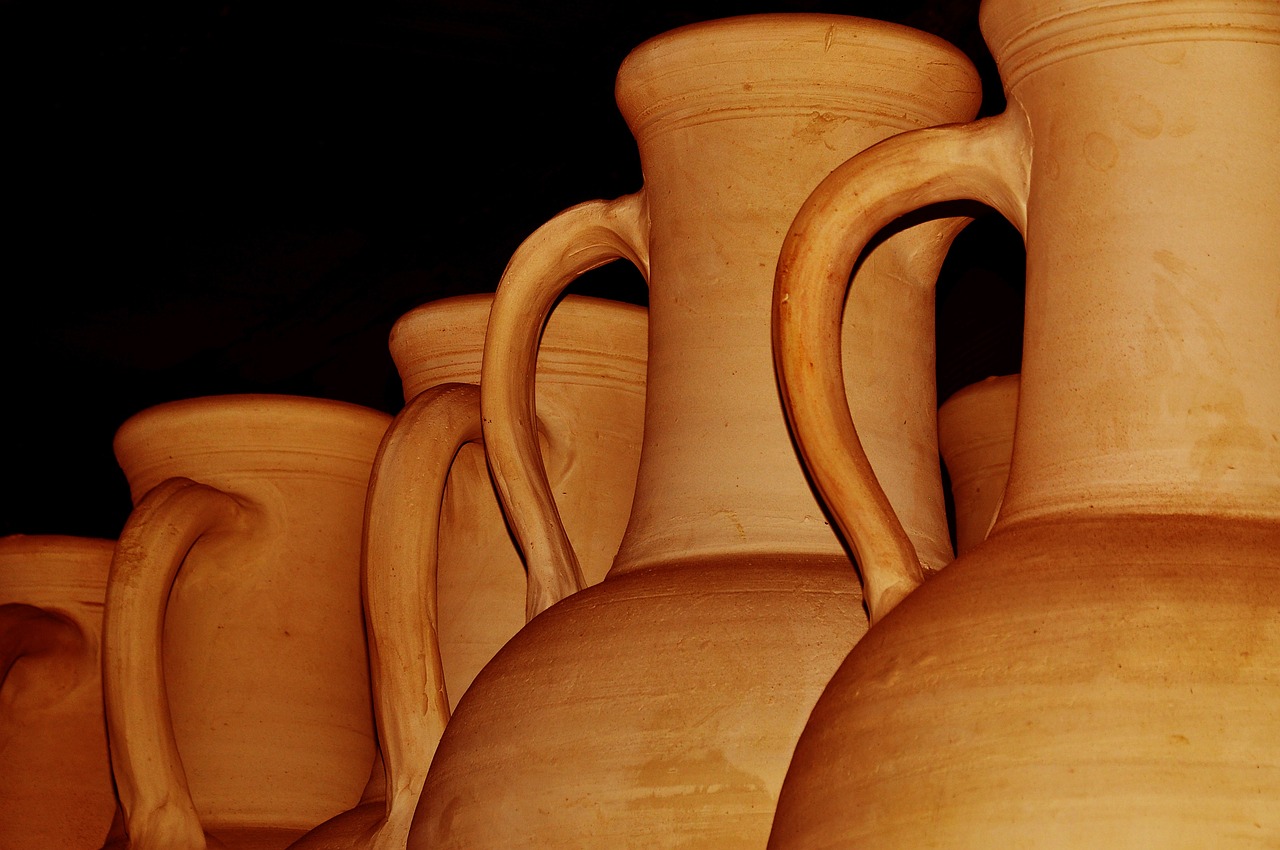
6. Choosing the Right Clay for Your Project
When it comes to pottery, the choice of clay can make or break your masterpiece. Selecting the right type of clay is not just a matter of preference; it’s about understanding the unique properties of each clay type and how they align with your project goals. Whether you’re a beginner or a seasoned artisan, knowing what each clay offers can significantly enhance your pottery-making experience.
First off, consider the intended use of your pottery. Are you looking to create functional items like bowls and mugs, or are you more inclined toward decorative pieces? For functional pottery, you’ll want to lean towards stoneware or earthenware, as both are durable and can withstand everyday use. On the other hand, if you’re crafting something for display, porcelain might be your best bet due to its elegant finish and translucence.
Another critical factor is the firing temperature. Each clay type has its own firing range, and using the wrong temperature can lead to disastrous results. For instance, earthenware typically fires at lower temperatures (around 1,830°F to 2,100°F), making it easier to work with for beginners. In contrast, stoneware requires higher temperatures (around 2,190°F to 2,400°F) to achieve its durable characteristics. Porcelain, known for its fine texture, demands even higher temperatures (about 2,300°F to 2,600°F), which can be challenging for those new to pottery.
Here’s a quick overview of the firing temperatures and uses of each clay type:
| Clay Type | Firing Temperature (°F) | Common Uses |
|---|---|---|
| Earthenware | 1,830 - 2,100 | Decorative pieces, flower pots |
| Stoneware | 2,190 - 2,400 | Bowls, mugs, functional items |
| Porcelain | 2,300 - 2,600 | Fine china, artistic sculptures |
Next, let’s talk about texture and workability. If you’re just starting out, earthenware is often recommended due to its pliability. It’s forgiving and allows for easy shaping, making it great for beginners. Stoneware also offers a good balance of workability and strength, while porcelain, although beautiful, can be tricky to handle due to its fine nature. It requires a bit more finesse and experience to manipulate effectively.
Lastly, consider the glazing options you wish to explore. Different clays react differently to glazes, which can affect the final aesthetic of your pottery. For example, earthenware often showcases vibrant colors but may require a clear glaze to seal its porous surface. Stoneware, on the other hand, can handle a variety of glazes, including those that enhance its natural tones. Porcelain, with its smooth surface, allows for intricate glazing techniques that can elevate your work to a whole new level.
In summary, choosing the right clay is a blend of understanding your project goals, the firing requirements, and how each type influences your creative process. Don’t be afraid to experiment with different clays to find what resonates with your artistic vision. After all, pottery is as much about the journey as it is about the final piece!
- What is the best clay for beginners? Earthenware is often recommended for beginners due to its workability and lower firing temperature.
- Can I use stoneware for decorative pieces? Absolutely! Stoneware can be used for both functional and decorative pottery.
- What happens if I fire porcelain at a lower temperature? Firing porcelain at a lower temperature can result in a weak and fragile piece that may not hold up over time.
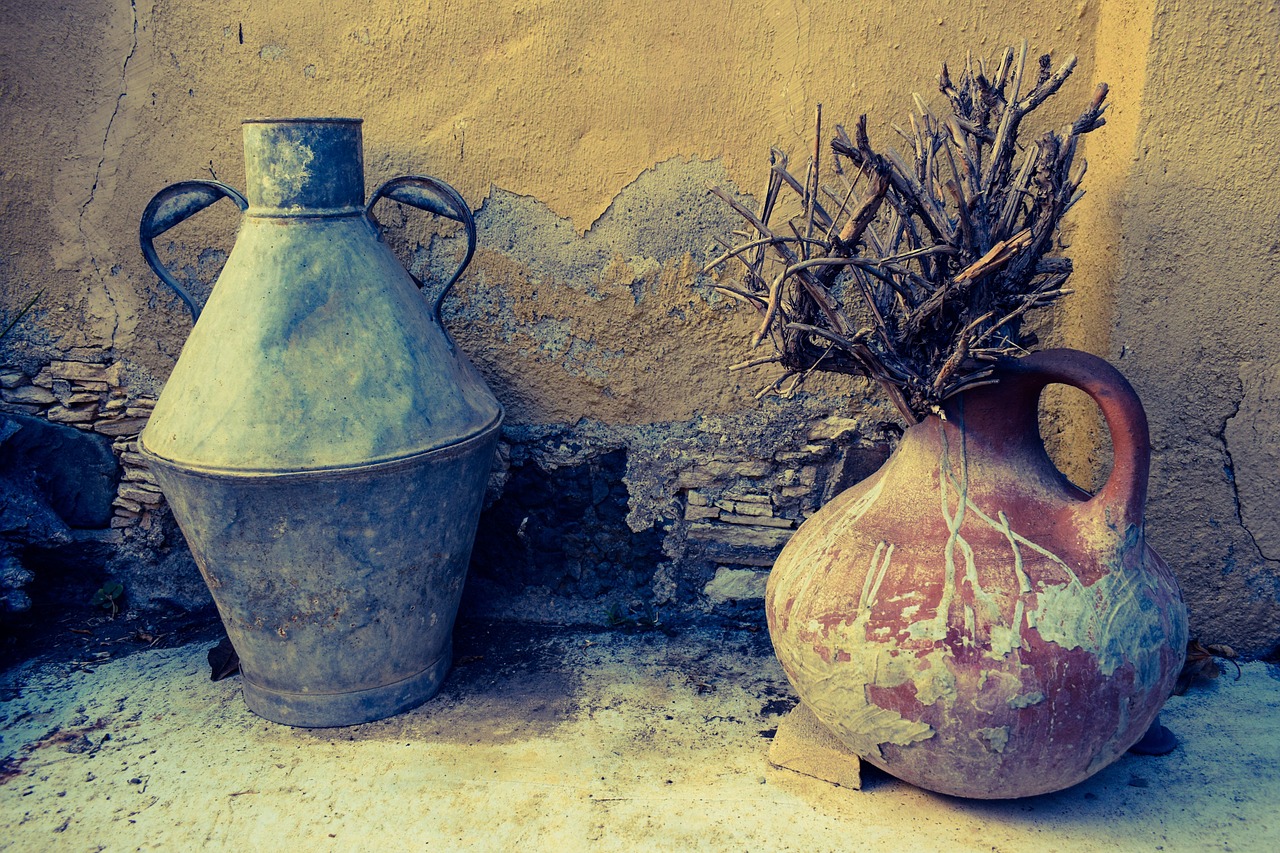
7. Tools and Equipment for Working with Clay
When it comes to pottery, having the right tools and equipment can make all the difference between a masterpiece and a mess. Whether you're a seasoned artisan or just starting out, understanding the essential tools for working with clay is crucial. Think of your tools as the brushes to a painter; without them, the canvas remains blank. So, what exactly do you need in your pottery toolkit?
First on the list is the **potter's wheel**. This is where the magic happens! The potter's wheel allows you to shape and mold your clay into various forms. It's not just a tool; it's an extension of your creativity. If you're a beginner, you might want to start with a kick wheel, which is more manual and helps you learn the basics of centering clay. As you become more proficient, transitioning to an electric wheel can enhance your efficiency and allow for more intricate designs.
Next up, we have **hand tools**. These are your go-to implements for shaping, trimming, and detailing your pottery. Basic hand tools include:
- Wire cutters - Essential for slicing clay off your block and for removing your finished piece from the wheel.
- Ribs - Used to smooth and shape your clay, giving it that polished look.
- Loop tools - Perfect for carving and adding texture to your designs.
Of course, no pottery studio is complete without a **kiln**. This is where your creations undergo transformation. The kiln fires your clay at high temperatures, solidifying it into durable pottery. It's important to choose a kiln that fits your needs, whether you're working with earthenware, stoneware, or porcelain. Each type of clay has specific firing requirements, so understanding these will help you select the right kiln.
Additionally, you should consider investing in a **work surface**. A sturdy, flat table covered with a clean canvas or plaster will provide a great workspace for kneading and shaping your clay. The right surface can prevent your clay from sticking and make cleanup a breeze.
Finally, let’s not forget about **glazing tools**. Glazing is the cherry on top of your pottery project, adding color and finish. Essential glazing tools include brushes, sponges, and spray guns. Each tool serves a different purpose and can dramatically change the final appearance of your piece. Experimenting with different techniques can lead to stunning results that will leave your audience in awe.
In summary, having the right tools and equipment can elevate your pottery-making experience. From the potter's wheel to the kiln, each tool plays a pivotal role in the creation process. Don't hesitate to invest in quality tools; they are an investment in your artistic journey. Remember, every great potter started with a simple set of tools and a passion for creating!
Q: Do I need a potter's wheel to make pottery?
A: While a potter's wheel is a fantastic tool for creating symmetrical pieces, you can also create pottery by hand using techniques like pinch pots or slab building.
Q: Can I use any type of clay with any kiln?
A: Not all clays are suitable for every kiln. Each type of clay (earthenware, stoneware, porcelain) has specific firing temperatures and conditions. Always check compatibility before firing.
Q: What are some beginner-friendly tools I should start with?
A: As a beginner, focus on basic hand tools like wire cutters, ribs, and loop tools. A potter's wheel and a kiln are essential as you advance, but starting with hand-building techniques can be very rewarding.
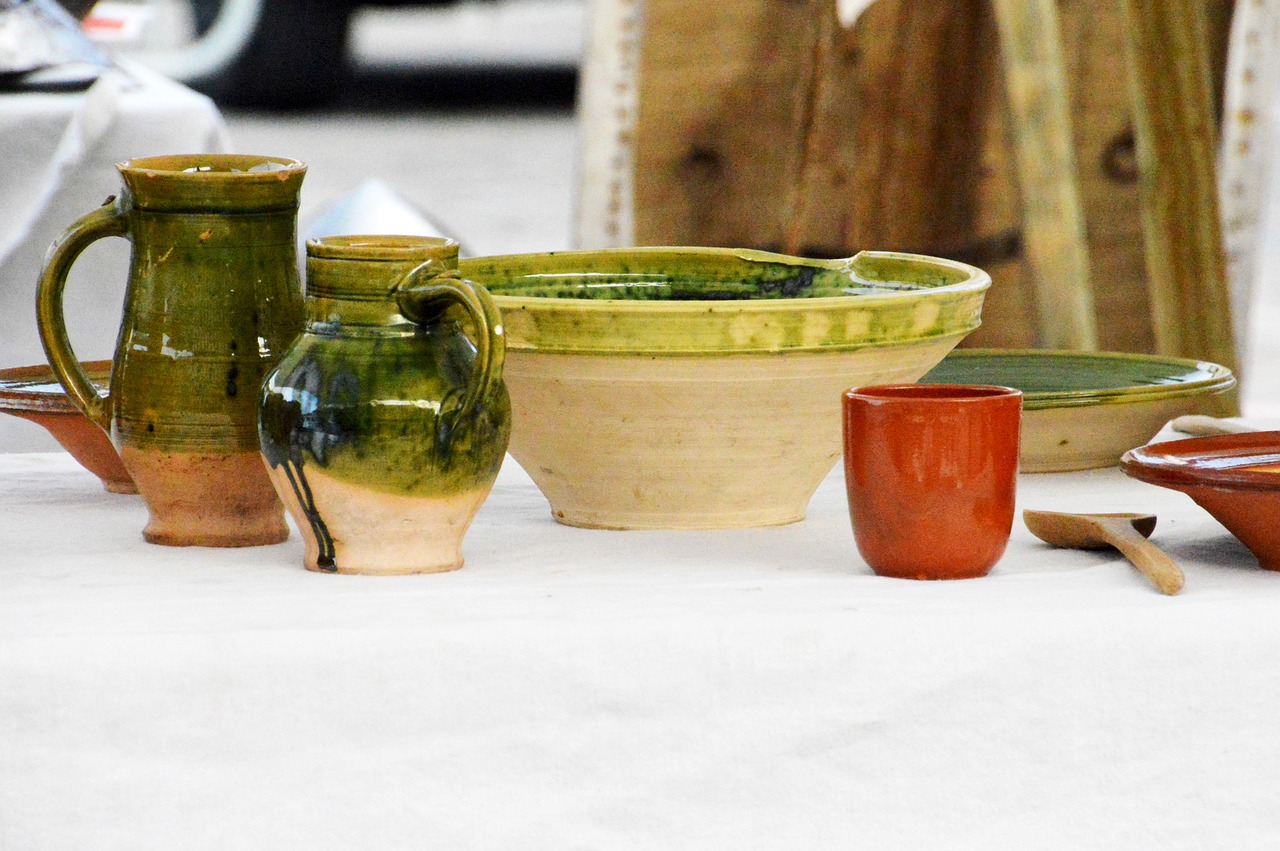
8. Common Mistakes to Avoid
When diving into the world of pottery, especially as a beginner, it's all too easy to stumble into some common pitfalls that can lead to frustration and wasted materials. One of the biggest mistakes is not understanding the properties of the clay you're working with. Each type of clay—earthenware, stoneware, and porcelain—has its own unique characteristics that dictate how it should be handled, fired, and glazed. For instance, if you try to use a stoneware glaze on earthenware, you might end up with a piece that doesn't adhere properly, leading to unsightly results.
Another common error is improperly preparing the clay before shaping it. This includes failing to wedge the clay adequately, which can result in air bubbles that may cause cracking during firing. Imagine trying to build a house on a shaky foundation; the same principle applies to your pottery. A well-prepared clay body is essential for achieving a smooth finish and structural integrity in your work.
Additionally, many beginners underestimate the importance of firing temperatures. Each clay type has a specific temperature range that must be adhered to in order to achieve the desired results. For example, firing earthenware at stoneware temperatures can lead to disastrous outcomes, such as warping or complete destruction of the piece. It's crucial to familiarize yourself with the firing requirements of your chosen clay to avoid these costly mistakes.
Moreover, when it comes to glazing, many novices often apply too much glaze or fail to shake it well before use. This can lead to drips and uneven surfaces, ruining the aesthetic of your carefully crafted piece. Remember, a little goes a long way when it comes to glaze application. It's like icing a cake—too much can overwhelm the flavor of the cake itself!
Lastly, one of the most overlooked mistakes is not taking the time to learn from your experiences. Each piece you create is a stepping stone towards mastery. Don't be afraid to experiment and, more importantly, to reflect on your process. Keep a journal of what works and what doesn't, and don’t hesitate to reach out to more experienced potters for advice. After all, pottery is as much about community as it is about the craft itself.
- What is the best clay for beginners?
Earthenware is often recommended for beginners due to its workability and lower firing temperature. - Can I mix different types of clay?
While it is possible, mixing different clays can lead to complications during firing. It's best to stick with one type for a project. - How do I know if my clay is too dry?
If the clay crumbles or feels hard to the touch, it may be too dry. You can add a bit of water and knead it to restore its workability. - Is it necessary to glaze my pottery?
Glazing is not mandatory, but it adds beauty and functionality, making your pieces more durable and easier to clean.
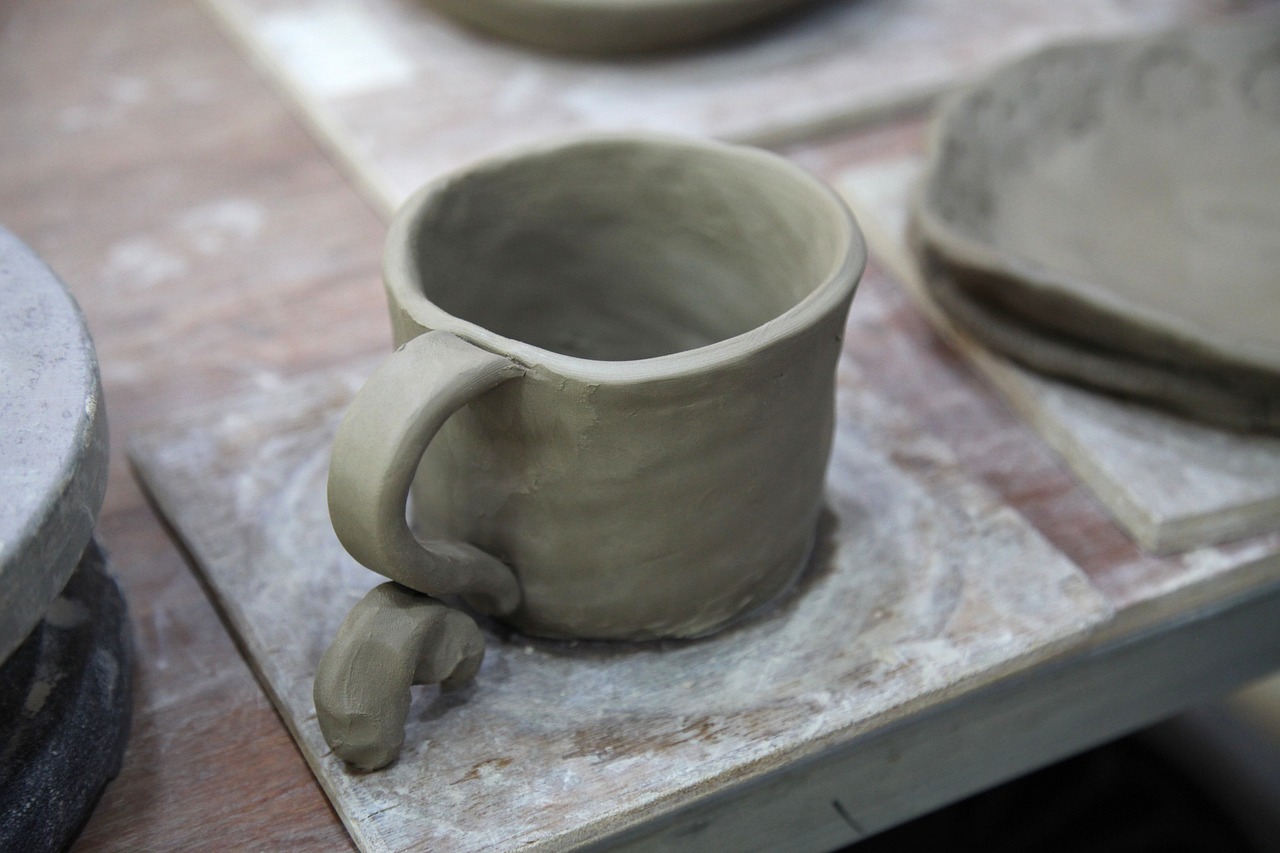
9. Resources for Further Learning
Embarking on your pottery journey is an exciting adventure, and having the right resources can make all the difference. Whether you're a complete novice or an experienced artisan looking to refine your skills, there are countless avenues to explore. From books that delve into the intricacies of clay types to online courses that offer hands-on instruction, the world of pottery education is rich and varied.
One of the best places to start is with books. Titles like "The Complete Guide to Pottery Making" and "Clay: A Studio Handbook" provide comprehensive insights into the different types of clay, techniques, and tips for successful pottery. These books often include illustrations and step-by-step guides that can help demystify the pottery-making process.
In addition to books, online courses have become increasingly popular. Websites like Craftsy and Skillshare offer a plethora of classes focused on various aspects of pottery, from hand-building techniques to glazing. These platforms allow you to learn at your own pace, making it easier to fit pottery into your busy schedule.
Another fantastic resource is local pottery workshops. Many communities have studios that offer classes for all skill levels. Participating in a workshop not only enhances your skills but also allows you to connect with fellow pottery enthusiasts. This sense of community can be incredibly motivating and inspiring.
To further enrich your learning experience, consider joining online forums or social media groups dedicated to pottery. Platforms like Reddit have active communities where you can ask questions, share your work, and gain valuable feedback from seasoned potters. Engaging with others can provide insights that you might not find in books or courses.
Lastly, don't forget about YouTube. There are countless channels dedicated to pottery where experienced artisans share their techniques, tips, and tricks. Watching these videos can be a great way to visualize the processes and get inspired by different styles and approaches to pottery making.
In summary, the resources available for further learning in pottery are vast. By utilizing books, online courses, workshops, community forums, and video tutorials, you can deepen your understanding of clay types and enhance your pottery-making skills. Remember, the more you learn, the more confident you'll become in your craft!
Q: What is the best type of clay for beginners?
A: Earthenware clay is often recommended for beginners due to its forgiving nature and vibrant colors, making it easier to work with.
Q: Can I use the same tools for different types of clay?
A: Yes, most basic pottery tools can be used across different clay types, but specific techniques may require specialized tools.
Q: What temperature do I need to fire stoneware?
A: Stoneware typically requires firing temperatures between 2,190°F to 2,300°F (1,200°C to 1,260°C) for optimal results.
Q: How can I improve my glazing techniques?
A: Experimenting with different glazing methods and attending workshops focused on glazing can significantly improve your skills.
Frequently Asked Questions
- What is the main difference between earthenware, stoneware, and porcelain clay?
Earthenware is known for its porous nature and vibrant colors, making it great for decorative pieces. Stoneware is more durable and versatile, suitable for both functional and artistic pottery. Porcelain, on the other hand, is prized for its fine texture and translucence, often used for high-end items.
- What are the typical firing temperatures for each type of clay?
Earthenware is typically fired at lower temperatures, around 1,830°F (1,000°C). Stoneware requires higher temperatures, generally between 2,192°F (1,200°C) and 2,372°F (1,300°C). Porcelain needs even higher temperatures, reaching up to 2,600°F (1,430°C) to achieve its signature strength and translucence.
- How does the type of clay affect glazing techniques?
Each type of clay interacts differently with glazes. For instance, earthenware often needs a glossy glaze to seal its porous surface, while stoneware can handle a variety of glazes, from matte to glossy. Porcelain usually benefits from a clear glaze that highlights its translucent quality.
- Can I use one type of clay for all my pottery projects?
While you can experiment, it's best to choose the clay type that suits your project's goals. If you're making functional ware, stoneware might be ideal. For decorative pieces, earthenware can shine. For fine art, porcelain is the way to go!
- What tools do I need for working with different types of clay?
Essential tools include pottery wheels, rolling pins, and sculpting tools. Depending on your clay choice, you may also need specific items, like trimming tools for stoneware or fine brushes for glazing porcelain.
- What are some common mistakes beginners make when using clay?
Beginners often misjudge the moisture content, leading to cracking. They might also rush the drying process or apply glazes incorrectly, resulting in uneven finishes. Taking your time and practicing patience can make a world of difference!
- Where can I find resources to learn more about pottery and clay types?
There are numerous resources available! Check out local workshops, online courses, or books like "The Complete Pottery Handbook" or "Clay and Glaze Technology". Websites like Pottery Heads and Ceramic Arts Network are also great for tutorials and tips.



















